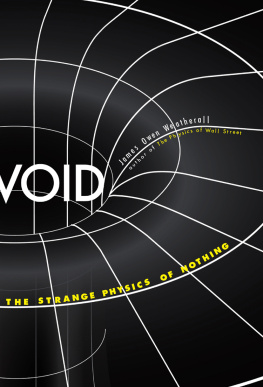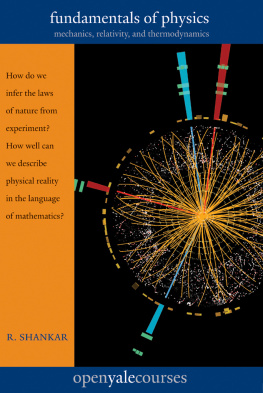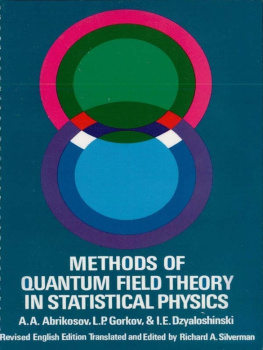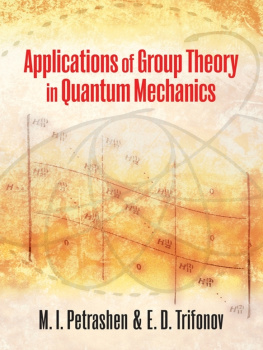L.D. LANDAU
E.M. LIFSHITZ
INSTITUTE OF PHYSICAL PROBLEMS, U.S.S.R. ACADEMY OF SCIENCES, MOSCOW
Translated by J.B. Sykes and M.J. Kearsley, Oxford
Copyright
Elsevier Butterworth-Heinemann
Linacre House, Jordan Hill, Oxford OX2 8DP
30 Corporate Drive, Burlington, MA 01803
First published in English 1951
Reprinted 1959, 1963
Second edition 1968
Third edition 1980
Reprinted 1982, 1985, 1986, 1988, 1993, 1994, 1996, 2000, 2001, 2003, 2005
Copyright 1980, Elsevier Ltd. All rights reserved.
No part of this publication may be reproduced in any material form (including photocopying or storing in any medium by electronic means and whether or not transiently or incidentally to some other use of this publication) without the written permission of the copyright holder except in accordance with the provisions of the Copyright, Designs and Patents Act 1988 or under the terms of a licence issued by the Copyright Licensing Agency Ltd, 90 Tottenham Court Road, London, England W1T 4LP. Applications for the copyright holders written permission to reproduce any part of this publication should be addressed to the published.
), by selecting Customer Support and then Obtaining Permissions.
British Library Cataloguing in Publication Data
A catalogue record for this book is available from the British Library
Library of Congress Cataloging in Publication Data
A catalogue record for this book is available from the Library of Congress
ISBN 0 7506 3372 7
For information on all Butterworth-Heinemann publication visit our website at www.bh.com

Printed and bound in China
PREFACE TO THE THIRD RUSSIAN EDITION
I N THIS edition the book has been considerably augmented and revised, with the assistance of L. P. Pitaevski throughout.
throughout.
New sections have been added on the magnetic properties of gases, the thermodynamics of a degenerate plasma, liquid crystals, the fluctuation theory of phase transitions of the second kind, and critical phenomena. The chapters on solids and on the symmetry of crystals have been substantially enlarged, in particular by a fuller account of the theory of irreducible representations of space groups as applied to the physics of the crystal state. The sections on the fluctuationdissipation theorem have been revised and extended.
Some sections have been removed from the book, dealing with the theory of quantum liquids and the related theory of almost ideal degenerate gases. The physics of quantum liquids, which was founded and largely developed by the pioneering experiments of P. L. Kapitza and the theoretical work of Landau himself, has now become a wide subject whose significance goes far beyond its original concern, the liquid helium isotopes. An account of the theory of quantum liquids must now occupy its rightful place in even a general course of theoretical physics, and the few sections given to it in the earlier editions of this book are insufficient.
They will appear, in a considerably expanded form, in another volume of this course, now being prepared by Pitaevski and myself, which will also give a detailed treatment of the Greens function method and the diagram technique, which have largely determined the development of statistical physics in the last 20 years. The transfer of these (and some other) topics to a separate volume is dictated not only by the fact that their inclusion in the present one would make it too large and would considerably alter its whole character. There is also the reason that such topics are essentially akin to hydrodynamics and macroscopic electrodynamics; for example, in presenting the microscopic theory of superconductivity it is convenient to make use of the known macroscopic theory of this phenomenon. For this reason, the new volume will stand as one of the course, after Mechanics and Electrodynamics of Continuous Media.
and myself, which will also give a detailed treatment of the Greens function method and the diagram technique, which have largely determined the development of statistical physics in the last 20 years. The transfer of these (and some other) topics to a separate volume is dictated not only by the fact that their inclusion in the present one would make it too large and would considerably alter its whole character. There is also the reason that such topics are essentially akin to hydrodynamics and macroscopic electrodynamics; for example, in presenting the microscopic theory of superconductivity it is convenient to make use of the known macroscopic theory of this phenomenon. For this reason, the new volume will stand as one of the course, after Mechanics and Electrodynamics of Continuous Media.
The first version of this book (which included only classical statistical physics) appeared in 1938. The reader of today may be surprised to find that the use of the general Gibbs method in statistical physics even in the 1930s called for reasoning such as is given in the extracts (reproduced below) from the preface to that book. Perhaps it was just in the development of the exposition of general principles and numerous applications of statistical physics that Landau most showed his astonishing breadth of grasp of the whole subject, his astonishing ability to discern the most direct and effective way of deriving every result of the theory, whether major or minor.
Lastly, on behalf of L. P. Pitaevski and myself, may I sincerely thank I. E. Dzyaloshinski
and myself, may I sincerely thank I. E. Dzyaloshinski , I. M. Lifshitz and V. L. Pokrovski
, I. M. Lifshitz and V. L. Pokrovski for many discussions of matters arising in the revision of this book.
for many discussions of matters arising in the revision of this book.
Moscow
E.M. LIFSHITZ
May 1975
FROM THE PREFACES TO PREVIOUS RUSSIAN EDITIONS
I T IS a fairly widespread delusion among physicists that statistical physics is the least well-founded branch of theoretical physics. Reference is generally made to the point that some of its conclusions are not subject to rigorous mathematical proof; and it is overlooked that every other branch of theoretical physics contains just as many non-rigorous proofs, although these are not regarded as indicating an inadequate foundation for such branches.
Yet the work of Gibbs transformed the statistical physics of Clausius, Maxwell and Boltzmann into a logically connected and orderly system. Gibbs provided a general method, which is applicable in principle to all problems that can be posed in statistical physics, but which unfortunately has not been adequately taken up. The fundamental inadequacy of the majority of existing books on statistical physics is precisely that their authors, instead of taking this general method as a basis, give it only incidentally.














 throughout.
throughout.